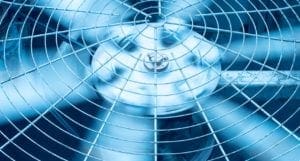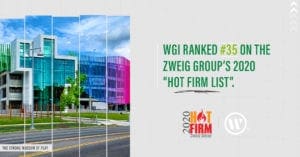
HVAC In The Post COVID-19 World
Discover how building owners and developers can leverage a better HVAC system as a competitive advantage in the post-COVID 19 world.
Learn from award-winning professionals — explore our whitepapers, blogs, and the latest industry updates.
Join our dynamic organization of engineers, land surveyors, landscape architects, environmental scientists, and architects!
Talk to a market leader today! We’ll answer any questions you have about our professional services.

The advent of liquid cooling technologies is rapidly progressing, utilizing water, refrigerants, and various synthetic phase-change materials as liquid dielectric coolants. These advancements are designed to enhance energy efficiency, reduce equipment size, and improve the economic feasibility of system upgrades for facilities.
Currently, about 20% of data centers are already utilizing liquid cooling technologies. Meanwhile, around 60-65% are actively considering upgrading their existing air-cooled systems to liquid cooling, immersive cooling, or a transitional hybrid solution. These upgrades aim to bridge the gap between current air-cooled systems and advanced liquid cooling, ensuring optimal investments and minimal downtime.
Many new data center facilities are specifically designed for AI workloads and incorporate liquid cooling from the start. However, existing facilities face challenges in transitioning smoothly and effectively. As data centers continue to evolve, their thermal design power (TDP) and rack densities are increasing, driven by advancements in IT technologies. AI-capable graphics processing unit (GPU) chipsets now surpass TDPs of 300 W, 800 W, and are rapidly approaching 1,000 W or more.
These chipsets are utilized in cloud and enterprise applications such as deep learning, natural language processing, AI chat generation, imaging, and training. As a result, the TDP of typical AI servers is now approaching 6 kW to 10 kW per server. Server designers predict that near-future server power requirements will increase from the current 35-50 kW per cabinet to as high as 100 kW per cabinet.
Major IT industry players and Multi-Tenant Data Centers (MTDC) owners and operators are keen to introduce upgrades to improve efficiency and better serve their clients. They must decide how much space to allocate for new TDP workloads to meet current demand and future growth over the next one to three years. Some will convert a few racks at a time, while others will dedicate entire rooms to these workloads and support the addition of liquid cooling systems.
Understanding the available technologies and the specific demands of your data center will be critical to its future success.
With the increase in AI hardware and other high-density applications, the need for a more efficient cooling solution has become more apparent.
Single-phase immersion cooling involves installing servers vertically in a coolant bath containing a circulating hydrocarbon dielectric fluid, similar to mineral oil. The coolant is pumped to a heat exchanger where heat is transferred to a cooler water circuit. This technique uses “open baths,” as there’s little to no risk of the coolant evaporating. The fluid makes direct contact with the server components, facilitating effective heat transfer.
Two-phase immersion cooling involves submerging servers or other heat-generating IT components in a thermally conductive dielectric liquid or coolant. As heat is transferred from the submerged servers, the surrounding liquid boils, changing phase to vapor. This vapor is then condensed back into liquid form by water-cooled condenser coils integrated at the top of the sealed racks.
At WGI, our MEP experts are at the forefront of advancing data center performance with both traditional and cutting-edge cooling solutions. By integrating innovative technologies with a focus on energy efficiency and scalability, we ensure that your data center excels in thermal management and is well-prepared for future advancements.
This is Part Two of our exclusive three-part series on Cooling Down AI & Data Centers. Be sure to explore Part One: Intro to Cooling Systems, for an in-depth look at the most common data center cooling techniques and how they are being utilized. In the final installment of this series, Part Three, we’ll delve into the world of direct-to-chip cooling, uncovering how this next-generation solution is reshaping data center efficiency – So, stay tuned!
Ready to transform your data center’s cooling efficiency? Contact us today and discover how our team of experts can help you stay ahead of the curve with innovative and sustainable solutions.
Let’s turn your cooling challenges into a breeze!

WGI is a national design and professional services firm leading in technology-based solutions for the construction of public infrastructure and real estate development. At WGI, we’re providing Tomorrow’s Infrastructure Solutions Today.

Discover how building owners and developers can leverage a better HVAC system as a competitive advantage in the post-COVID 19 world.

WGI makes a very significant 41-spot jump from last year’s Hot Firm ranking of #76.

WGI’s experts from multiple divisions share their thoughts and predictions in terms of what we can expect to see in our industry in 2022 and beyond.

The explosive growth in Artificial Intelligence has led to soaring energy demands in data centers, creating significant challenges in managing the resulting heat. This has opened up substantial opportunities for companies specializing in cooling systems for servers.

We’re refreshing our brand to reflect the energy, inspiration, and excitement that we feel when we come to work every day.

WGI moves up 37 spots on Engineering News-Record (ENR)’s 2020 Top 500 Design Firms List.
You’ve been searching for a place like WGI. We look forward to meeting you soon.
Sign up to receive emails to hear our latest news and achievements in our monthly newsletter.
Enter your zip code, and we’ll personalize your experience with local projects, office locations, team members, and more.
WGI supports its associates with meaningful opportunities for growth, strong benefits and perks, while we work collaboratively with clients and co-consultants to shape and improve communities.






WGI is a dynamic organization with opportunities nationwide for engineers, land surveyors, landscape architects, environmental scientists, and architects.